- Home
- Diane Fanning
Mommy's Little Girl
Mommy's Little Girl Read online
Dear Reader:
The book you are about to read is the latest bestseller from the St. Martin’s True Crime Library, the imprint The New York Times calls “the leader in true crime!” Each month, we offer you a fascinating account of the latest, most sensational crime that has captured the national attention. St. Martin’s is the publisher of Tina Dirmann’s VANISHED AT SEA, the story of a former child actor who posed as a yacht buyer in order to lure an older couple out to sea, then robbed them and threw them overboard to their deaths. John Glatt’s riveting and horrifying SECRETS IN THE CELLAR shines a light on the man who shocked the world when it was revealed that he had kept his daughter locked in his hidden basement for 24 years. In the Edgar-nominated WRITTEN IN BLOOD, Diane Fanning looks at Michael Petersen, a Marine-turned-novelist found guilty of beating his wife to death and pushing her down the stairs of their home—only to reveal another similar death from his past. In the book you now hold, MOMMY’S LITTLE GIRL, Diane Fanning returns to chronicle the disappearance of little Caylee Anthony—a case that has riveted the nation.
St. Martin’s True Crime Library gives you the stories behind the headlines. Our authors take you right to the scene of the crime and into the minds of the most notorious murderers to show you what really makes them tick. St. Martin’s True Crime Library paperbacks are better than the most terrifying thriller, because it’s all true! The next time you want a crackling good read, make sure it’s got the St. Martin’s True Crime Library logo on the spine—you’ll be up all night!
Charles E. Spicer, Jr.
Executive Editor, St. Martin’s True Crime Library
Other True Crime Accounts by
DIANE FANNING
A Poisoned Passion
The Pastor’s Wife
Out There
Under the Knife
Baby Be Mine
Gone Forever
Through the Window
Into the Water
Written in Blood
Available from the True Crime Library of
St. Martin’s Paperbacks
Mommy’s
Little Girl
Casey Anthony and Her Daughter
Caylee’s Tragic Fate
DIANE FANNING
St. Martin’s Paperbacks
MOMMY’S LITTLE GIRL
Copyright © 2009 by Diane Fanning.
Cover photograph of Casey Anthony by Red Huber / Orlando Sentinel.
Background cover photograph by Thomas Northcut / Getty Images.
All rights reserved.
For information address St. Martin’s Press, 175 Fifth Avenue, New York, NY 10010.
EAN: 978-0-312-36514-1
Printed in the United States of America
St. Martin’s Paperbacks edition / November 2009
St. Martin’s Paperbacks are published by St. Martin’s Press, 175 Fifth Avenue, New York, NY 10010.
10 9 8 7 6 5 4 3 2 1
To Caylee Marie Anthony
CONTENTS
ACKNOWLEDGMENTS
AUTHOR’S NOTE
THE DISCLOSURE
CHAPTER 1
CHAPTER 2
CHAPTER 3
CHAPTER 4
CHAPTER 5
CHAPTER 6
CHAPTER 7
CHAPTER 8
CHAPTER 9
CHAPTER 10
CHAPTER 11
THE PAST
CHAPTER 12
CHAPTER 13
CHAPTER 14
CHAPTER 15
CHAPTER 16
CHAPTER 17
CHAPTER 18
CHAPTER 19
THE CRIME
CHAPTER 20
CHAPTER 21
CHAPTER 22
CHAPTER 23
CHAPTER 24
CHAPTER 25
CHAPTER 26
CHAPTER 27
CHAPTER 28
CHAPTER 29
CHAPTER 30
CHAPTER 31
CHAPTER 32
CHAPTER 33
CHAPTER 34
CHAPTER 35
CHAPTER 36
CHAPTER 37
CHAPTER 38
CHAPTER 39
CHAPTER 40
CHAPTER 41
CHAPTER 42
CHAPTER 43
CHAPTER 44
CHAPTER 45
CHAPTER 46
THE DISCOVERY
CHAPTER 47
CHAPTER 48
CHAPTER 49
CHAPTER 50
CHAPTER 51
AFTERWORD
ACKNOWLEDGMENTS
I honestly don’t know how Danielle Tavernier of the State Attorney’s Office managed to keep up with all the media requests for this case. Not only were the number of queries extraordinary, but the volume of documents, video and audio recordings and photographs was staggering. Thank you, Danielle, for always being courteous, professional and prompt with your responses. You deserve a medal.
I truly appreciate Rick Cuza1, Jesse Grund, Richard Grund and Jackie Mattlin for sharing their personal experiences. And thanks to the many others who spoke with me but requested anonymity.
Thanks to Carlos Padilla and Fox 35’s Shannon Butler for their helpfulness and to Dan Philips of Mission Investigations for his assistance.
I extend endless appreciation to Matt Phelps, Kathryn Casey and Sue Russell for their friendship and support as I worked on this book.
Thanks to Charlie Spicer for giving me this opportunity, to Yaniv Soha for his input and advice and to Jane Dystel, my guiding light.
And as always, I couldn’t have done it without my own 24/7 cheerleader, Wayne Fanning—thanks for always being here.
_____
1 The last name of Cindy Anthony’s birth family has been changed throughout the book to protect their privacy.
AUTHOR’S NOTE
This is a true story, though some names have been changed.
This book is based on a careful review of more than 6000 pages of transcripts of police interviews, police reports and other official documents, as well as audiotaped and videotaped conversations and interviews, and information gathered from on-site research and personal interviews. However, the author conducted no interviews with Casey, Cindy, George, or Lee Anthony.
THE DISCLOSURE
“Repetition does not transform
a lie into the truth.”
—Franklin Roosevelt
CHAPTER 1
George Anthony stopped by the post office to pick up a certified letter just before noon on July 15, 2008. White hair flowed straight back from his forehead, leaving a pronounced widow’s peak. Still-dark eyebrows predominated his face, making his eyes appear sunken over his sharp nose.
Considering the way the mail was sent, and his recent financial problems, George thought it was bound to be bad news inside the envelope. He was right. It was a notification from Johnson’s Wrecker service. It made no sense. According to the company, they had possession of his family Pontiac. His daughter Casey drove this car, and she was in Jacksonville. He didn’t understand how the 1998 Pontiac Sunfire had ended up in an impound lot in Orlando.
He called his wife Cindy. She was equally puzzled by the situation. George headed to the Narcoossee Road address to ask questions and pick up the car. At the front counter, Nicole Lett surprised him when she said that Johnson’s Wreckers had towed the Pontiac at the end of June at the request of Amscot, a payday loan company, on the corner of East Colonial Drive and North Goldenrod Road in Orlando. To retrieve the vehicle, he needed to show proof of ownership and pay $466.78 in cash for the towing and storage charges.
George called Cindy again. Then he called Amscot and asked why they’d ordered the car removed from their lot. They told him the car had sat in th
e spot for three days before they’d called Johnson’s Wreckers. They thought it had been abandoned.
Cindy and George met at home, picked up the title, stopped at the bank to withdraw $500 and, two hours after George’s first visit, returned to the towing company.
The couple walked up to the counter and greeted Nicole. Cindy, in a cute, short blonde cut with youthful bangs, was in obvious ire. She demanded an explanation of the company’s process for sending a certified letter, expressing her annoyance at the number of days that had passed before they received notification in the mail. “We thought the car was in Jacksonville. How were we supposed to know it was here?”
Nicole attempted to explain the situation, but Cindy wasn’t listening. She launched instead into a long complaint about having to pay the high charges, particularly the $35 administrative fee for sending the certified letter. She also balked at paying all of the accumulated storage charges, blaming the company for the notification delay.
Nicole was used to dealing with disgruntled customers. No one was ever pleased to come to the lot to recover their car, and usually, they took it out on her. The difference with this couple was their surprise and confusion. They could not understand why the car was here instead of up north where their daughter said she’d driven it. They fretted vocally about not seeing her or their granddaughter for a month or more. Nicole had no answers to that question. She called her supervisor, Simon Burch, to address their other concerns.
When he approached the counter, Cindy asked, “Why is the bill so expensive? Why did it take eleven days to notify me that you had my car?”
“Per Florida statutes, on the fourth day, we’re required by law to send out a certified letter to the registered owner of the vehicle. Our computer system automatically generates those letters,” he answered. He spread out a calendar and together they looked at the dates. “Four days after your car arrived was the Fourth of July. Due to the holiday and the weekend that followed, that’s probably why it took so long for the letter to get to you. We can’t control the post office.”
“Okay,” Cindy said. “I understand, and I appreciate it.” She then turned to George and they exchanged terse comments. She obviously was still dissatisfied and a bit disgruntled that George was not taking a strong stand. She turned back to Simon and asked for a discount.
“I’m sorry, ma’am. I’m not at liberty to do that. You know, unfortunately, this is a business. It’s not a particularly pleasant job sometimes, but it is a business, you know, that’s in business to make money, and we don’t give discounts.”
Unhappy, but seeing no other alternative, Cindy agreed to pay. Nicole filled out the paperwork, got verification of ownership on line, accepted payment and issued a receipt. Simon asked, “Do you have the keys?”
George said he did.
“Okay, no problem, then. I’ll come around and get you.”
As Simon and George walked to the vehicle in the pouring rain, George apologized for his wife’s aggressive manner. “We’ll probably get divorced over this. The daughter is telling us crap, a bunch of lies.”
“I’m sorry about your situation,” Simon sympathized.
“I just need to see my granddaughter. You know, she won’t let us see our granddaughter,” George complained.
“I’m sorry about your situation, sir. You know, I’m sorry your car got impounded, but this is what it is,” Simon said.
When they got within three feet of the white Pontiac, George smelled a distinctive unpleasant odor. He’d once worked in law enforcement. He knew that smell, and it filled him with dread. He thought of his daughter and granddaughter. Please don’t let this be what I think it is. He walked around to the driver’s side and inserted the key. He noticed his granddaughter’s car seat in the back and pulled open the door.
“Whoa, does that stink!” Simon exclaimed. The stench reminded him of another car that had been impounded recently. Before they towed it, the vehicle had sat for five days—with the body of a man who’d committed suicide inside.
George sat down in the driver’s seat and reached over to the other side, opening the passenger’s door to ventilate the car. As he breathed in the odor, his horror increased. He turned the key in the ignition to start it, but then he paused. No, George, he told himself. If there’s something wrong, you got to find out now. You can’t take it away.
“Will you please walk around to the back of the car and look inside this with me?” George asked. Please don’t let this be my Caylee.
“Well, here, let me. Give me the keys and we’ll open the trunk up. There’s something like garbage in here.”
“Yeah,” was all George could find to reply.
When the trunk opened, flies buzzed out, and both men rocked back on their heels from the pungent odor. “Puff!” George exclaimed. “That’s rotten!”
Simon knew with certainty that rotting garbage did not smell like that, but he kept those thoughts to himself.
The men saw an imperfectly round, basketball-sized stain in the middle of the trunk. To the left, by the taillight, was a trash bag. “Let’s just make sure there is garbage in here,” Simon said. He pulled the bag toward the edge of the trunk, surprised by its light weight. Unfastening the tie, he spread open the top. They both peered down at papers, dryer lint, Arm & Hammer laundry detergent, a pizza box and other assorted trash.
“Well, here, I’ll take care of this. I’ll get rid of it for you,” Simon said. He walked toward the front of the car, where a Dumpster sat on the other side of the fence. He heaved the bag over. While Simon disposed of the trash, George stepped into a corner, hunched over and heaved up his most recent meal.
George pulled himself together, slid into the front seat and tried to start the car again, but he couldn’t get the engine to turn over. Simon looked over George’s shoulder at the control panel and saw that the gas gauge pointed to empty. “Oh, it’s out of gas,” he said.
“Okay,” George said. “Well, I brought gas with me.”
Together they walked back to George’s car. George reiterated his complaints about his daughter’s lies along the way. He pulled a small, round, battered metal gas can with chipped paint out of the trunk. On the way back to the Pontiac, George apologized again for his wife’s attitude.
“I totally understand, dude,” Simon said. “We get it all the time. It’s no big deal.”
With a gallon of gas in its tank, the car started right up. George drove it out of the fenced lot to the front of the business, where he got out and approached Simon again. George offered his hand and said, “Thank you. I’m sorry.”
Simon shook his hand and said, “Yeah, no problem. No problem. Have a good day now.” He turned away and went inside as George approached Cindy’s car.
“This car stinks so bad,” he told his wife, “I don’t know how I can drive it home.”
He wanted to roll the windows all the way down, but the rainfall made that impossible. With the windows cracked less than an inch, he could not get enough fresh air, and gagged all the way home. He pulled the Pontiac into the garage.
Cindy walked in and came to an abrupt stop. “Jesus Christ!” she shouted. “What died?”
CHAPTER 2
George stood in silence, not daring to voice his darkest fears.
“George, it was the pizza, right?” Cindy asked in a voice tinged with desperation.
“Yeah,” George lied, “it was the pizza.”
Nonetheless, the sight of Caylee’s car seat in the back, along with her white backpack, adorned with brown monkeys, and her very favorite baby doll, cinched up Cindy’s anxiety another notch. The couple removed the battery from the car to foil any plans their daughter Casey might have to remove the vehicle from the garage. They thought about going through the car in search of answers, but Cindy saw the rising level of anger in her husband and knew they both needed to be at work. “I’ll take care of everything with Casey,” she told her agitated husband. Cindy left home to finish her day as a managing nurse at G
entiva Health services in Winter Park. George reported for security duty at the Premiere Cinema in the Fashion Square Mall.
When Cindy returned home, she walked straight to the garage. She thought it very odd that Casey had left a purse in the car. She picked it up and found a piece of paper beneath it with the phone number for Amy Huizenga scrawled on it. Cindy had never met Amy, but knew she was her daughter’s friend. She stopped her inspection of the car to call.
Cindy caught Amy at The Florida Mall where she was hanging out with her friend J.P., who was shopping for a cell phone. “Amy, this is Mrs. Anthony, Casey’s mom. Have you seen Casey in the last few days?”
“Well, Mrs. Anthony, she picked me up at the airport a few hours ago. I just got back from Puerto Rico.”
“Really? How did she pick you up?”
“I had lent her my car for the last week because her car was in the shop.”

 Death on the River
Death on the River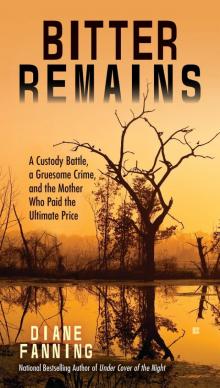 Bitter Remains
Bitter Remains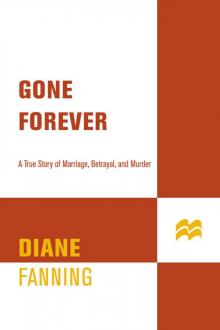 Gone Forever
Gone Forever Sleep My Darlings
Sleep My Darlings A Poisoned Passion
A Poisoned Passion Through the Window: The Terrifying True Story of Cross-Country Killer Tommy Lynn Sells (St. Martin's True Crime Library)
Through the Window: The Terrifying True Story of Cross-Country Killer Tommy Lynn Sells (St. Martin's True Crime Library) Chain Reaction
Chain Reaction Baby Be Mine
Baby Be Mine The Pastor's Wife
The Pastor's Wife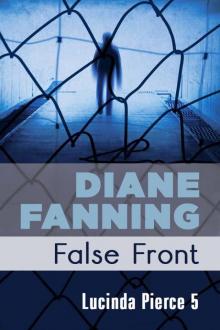 False Front (Lucinda Pierce)
False Front (Lucinda Pierce)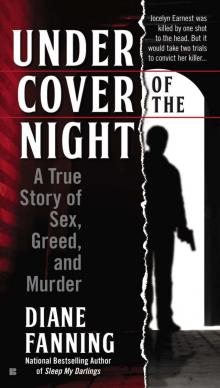 Under Cover of the Night
Under Cover of the Night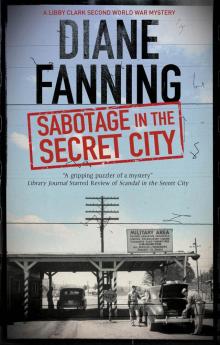 Sabotage in the Secret City
Sabotage in the Secret City Written in Blood
Written in Blood Treason in the Secret City
Treason in the Secret City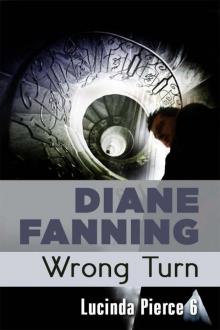 Wrong Turn
Wrong Turn Under the Knife
Under the Knife Mommy's Little Girl
Mommy's Little Girl Scandal in the Secret City
Scandal in the Secret City